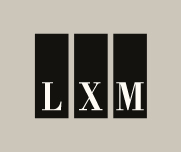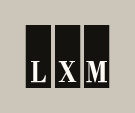Public sector procurement practices and standards have evolved considerably over the last two decades. The evolution presents a significant opportunity for public sector organizations to enhance public trust through improved transparency and consistency in procurement, and to improve operating efficiencies through the adoption of streamlined processes and templates.
This business case summary overviews:
- Main drivers for the modernization
- What modernization entails
- Expected outcomes
Main drivers for modernization
A few things have happened in the last two decades that have driven the need to modernize procurement practices as overviewed below.
1. Increased understanding of “good governance” public procurement
The dot-com market crash in the early 2000s led to a corporate governance regulatory reforms that, today, inform our understanding of good governance. It is in the context of this evolving body of knowledge of good governance that the 2005 City of Toronto’s Computer Leasing and External Contracts Inquiry, took place in Ontario. This inquiry was followed over a decade later by the 2020 Collingwood Judicial Inquiry, also in Ontario. These inquiries produced hundreds of recommendations relating to procurement governance.
These modern-day principles are not always well reflected in older procurement policies where the governing body is often involved in approving low-dollar value, low-risk contracts and where board or council committees are sometimes involved in procurement decision-making roles. As these inquiries have shown, the direct involvement of board members or elected officials in the day-to-day operations and procurement decision-making can lead to serious problems.
2. New trade agreements
In 2017, Canada’s domestic trade agreement, Canada’s Agreement on Internal Trade (AIT) was replaced with the Canadian Free Trade Agreement (CFTA). At the same time, the EU-Canada Comprehensive and Economic Trade Agreement (CETA) was formally adopted by Canada. The CETA is the first international agreement that broadly applies to sub-national public sector organizations.
The 2017 trade agreements impose enhanced obligations of transparency and fairness on public sector organizations and provide suppliers with new rights to be heard through debriefing sessions and complaint mechanisms. These trade agreements in many cases rendered procurement practices and policies obsolete.
3. Online advertising and bidding
The last two decades have seen a proliferation of digital platforms that support the bidding process such as Biddingo, BidsandTenders, Merx and Bonfire, to name a few. This trend of moving the bid notification and bid process online was expedited by the COVID pandemic, such that the expectation today is that contract opportunities will be advertised on a website intended for this purpose and the bidding process will be conducted online. Public sector organizations that fail to transition to a commonly used platform to advertise contract opportunities now risk losing access to qualified bidders and competitive pricing.
What modernization entails
Procurement modernization is straightforward. It requires an update to the policy, procedures, and templates and training to achieve consistency, compliance, and efficiency in procurement. Key features of the modernized framework typically include the following:
- An updated policy that:
- Clarifies the role of the governing body and aligns it with modern-day good governance standards
- Assigns accountability for policy compliance to the chief management executive
- Delegates specific authorities to senior executives and others
- Requires governing body approvals for high value non-competitive procurements
- Includes an ethics framework for staff, members of the governing body and suppliers
- Updated procedures that:
- Cover the procurement and contracting cycle, from planning to contract closing
- Align processes to the requirements of the trade agreements
- Include a master procurement checklist to guide staff through individual procurements
- Include standard forms for internal approvals and for communicating with bidders
- Designate a widely used platform as the organization’s tendering website for posting notices
- Simplified RFx and contract templates:
- Designed to limit supplier and staff investment in document preparation
- Aligned with public sector contracting standards
- Training staff and members of the governing body on the new standards
- Facilitates the change management process
Outcomes of modernization
Public sector organizations can expect to enjoy many benefits following the modernization of their procurement practices, a few of which are listed below.
1. Increased efficiency and productivity
Below are examples of efficiency and productivity gains that can be expected from a modernized framework.
Reserving Governing Body Contract Approvals for Higher Risk Matters
Engaging a governing body in a contract approval is an administratively demanding and, therefore, costly process that often unnecessarily delays the start of projects and the organization’s access to goods and services.
Recognizing the limited value in involving governing body in contract award approvals, modernization typically involves reserving governing body approvals for higher risk matters, such as non-competitive contracts, where management does not recommend awarding to the selected bidder following a competitive process. This approach is not only justified from a cost/efficiency standpoint but also from a “good governance” standpoint: As noted by Justice Marocco in the 2020 Collingwood Inquiry report: “governing body members must remain at arm’s length from staff and suppliers in the procurement process. Elected officials should be prohibited from involvement in the selection of the procurement process, evaluation of the bids, or selection of the successful supplier.”
Streamlining Processes
Older procurement policies often mandate the use of bid processes and templates that are not right sized to the risk and value of the procurement. Policies often require staff to engage in administratively heavy processes, such as an advertised RFP process, at relatively low dollar values, thus requiring staff to invest a disproportionate amount of time in low-dollar value procurements.
Modernization, through the increased use of invitational processes and use of online platforms and processes, achieves a better balance between the expenditure of staff time in the procurement activity and contract value, thus introducing efficiencies into the process.
Streamlining Template Documents
Template documents are not often structured with a view to making the process efficient for staff and supplier document drafters. RFP, RFT or RFQ templates are often long, legalistic, and not well organized, thus causing both suppliers and staff to spend more time than necessary on document preparation activities.
Modernization introduces simplified documents with a view to achieving a better balance between staff and supplier time spent drafting documents and contract value thus introducing efficiencies into the process.
2. Enhanced competition and lower costs
Some public sector organizations still rely on newspapers and on their own website to advertise contract opportunities. An organization that still relies on local papers or on its own website to publish bid opportunities is not attracting the attention of all potentially interested bidders. A failure to attract sufficient bids may also result in having to work with less qualified or experienced suppliers or lead to overpaying for goods and services through a lack of competition.
Modernization involves using a popular modern platform to post tender notices and documents. Moving to a designated tendering website to post notices of contract opportunities materially increases the visibility of tenders and helps attract more bids and fosters better competition.
3. Enhanced stakeholder confidence in the organization
Aligning procurement practices with modern standards demonstrates to citizens, suppliers, and other stakeholders that the organization is serious about maintaining high standards of transparency and maintaining public trust and confidence in its operations. Conversely, an organization that has failed to align its policy and practices to modern standards may be criticized for not prudently managing the organization.
4. Enhanced staff confidence when procuring
Equipped with clear tools to carry out a procurement process, staff will feel more confident knowing they are meeting their obligations of probity and due diligence in procurement and representing the organization appropriately when working with bidders and contractors.
Where LXM LAW can help
Our firm has developed a principled approach to the modernization of existing procurement frameworks. Our approach takes into account the good governance practices reflected in the inquiry reports and is legally compliant. Our pre-packaged procedures cover the entire procurement and contracting lifecycle from planning to contract close-out and our approach is focused on ensuring ease-of-use so that organizations without legal or procurement teams can independently develop tenders, administer their own procurements and manage contracts.
For a free consultation, please contact any of our lawyers or email info@lxmlaw.ca.

